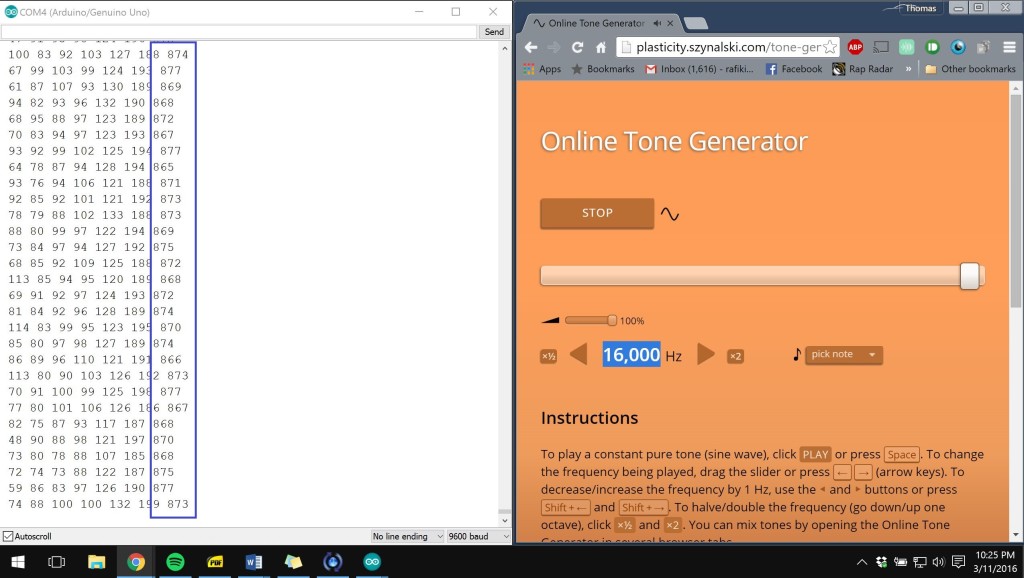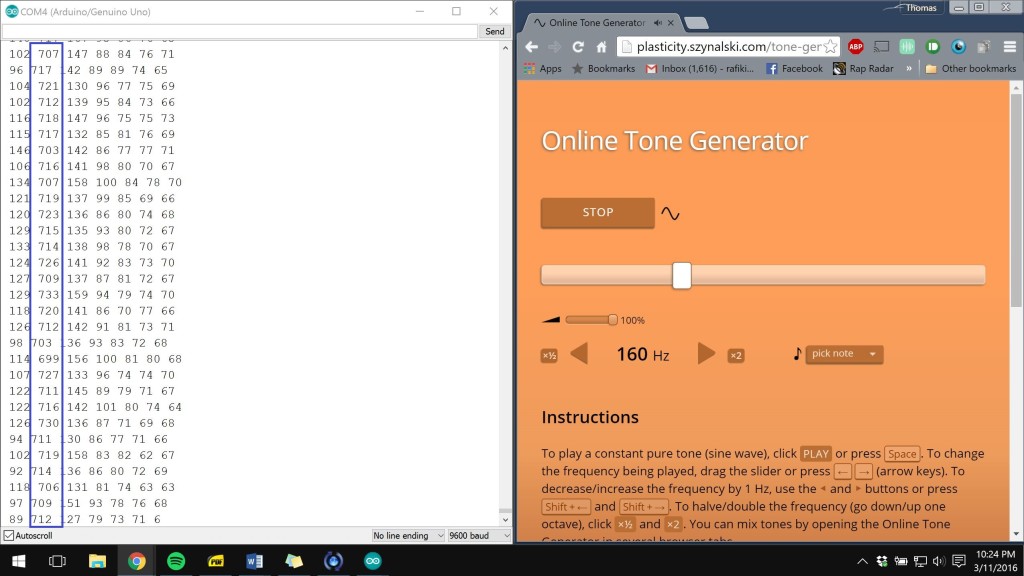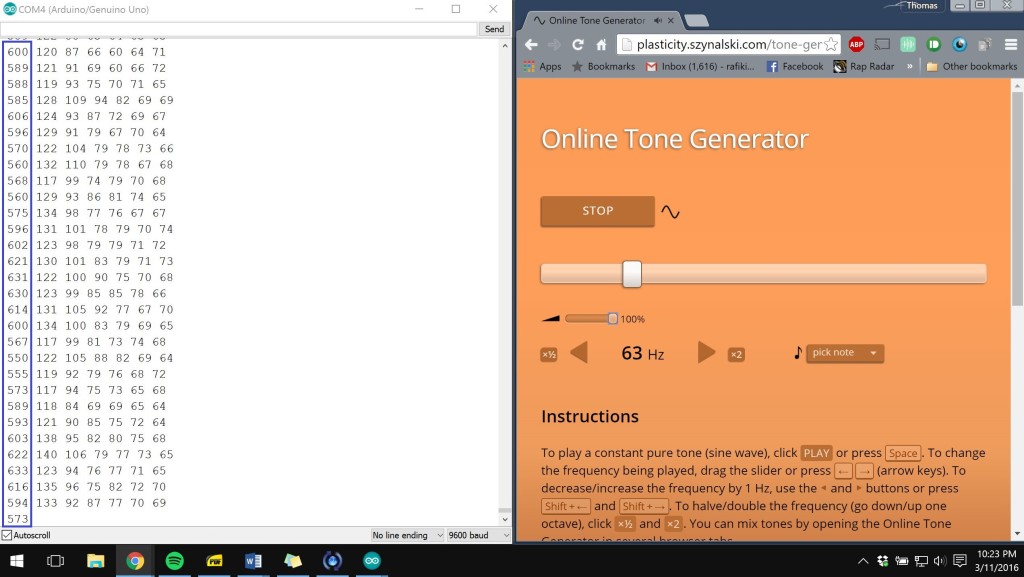This week I managed to successfully filter input audio using the MSGEQ7 IC. This chip allows you to input the audio signal, and it will assign a value between 0 and 1023 for each filter range: 63Hz, 160Hz, 400Hz, 1kHz, 2.5kHz, 6.25kHz and 16kHz. After some frustrations (poor data sheet and a few mistakes while wiring it up), I managed to get it to correctly output values to a playing song. To test the accuracy, I used an online audio generator to play only frequency at a time (http://plasticity.szynalski.com/tone-generator.htm). When the specific frequency falls into one of the ranges, that value increases, while the other values don’t. Check out some of my results below. I took a screen shot of the Arduino serial monitor output next to the tone being generated.

Generating 16KHz Tone

Generating 160Hz Tone
 Generating 63Hz Tone
Generating 63Hz Tone
One potential issue that I realized, and did not foresee, is that the volume of the music affects the relative magnitudes of the values. I may have to figure out a way to normalize this, otherwise loud music will send all the balls to the top, and quite music will not lift the balls at all.
My ultra sonic range finders just arrived in the mail, so I will be testing them to find out what sort of range and accuracy they have. I also want to hook them up to a multiplexer IC to see if I can read the sensors fast enough to adjust the heights.
In the following week I will be designing the PCB layout, and I will prototype a test circuit to see how well the DIY methods are that I have seen online. I also recently learned about a free online Photoshop clone called Pixlr (check it out here https://pixlr.com/editor/). I have played around with it a little, and I think that it will be more than capable enough to edit the Altium files into the black and white, color inverse, and horizontally mirrored images that I will need to make etch mask.
With the increased access to technology for artists, the end of the twentieth century saw a move towards new media art. The aesthetics of my project is actually somewhat dependent on the state of operation. Primarily, I see it as a combination of minimalism with information visualization. The product itself will be almost entirely devoid of color, and the form will be geometric and symmetric with 7 columns and a box. During operation, the colorful LEDs will definitely change this aesthetic. My project may also contain some elements of generative art, in the way that the dynamic ball movement is an automated response to music. As the artist, I will not actually be controlling the movement that the user experiences.

1 Comment. Leave new
Interesting, I haven’t really considered information visualization a distinct aesthetic before, but it totally makes sense. The information is the context and the visualization is the vessel in which it is delivered. I’m totally impressed with your project, and while we;re not suppose to only praise in the comments, I must say that I think you have found a unique and compelling approach to utilizing fairly sophisticated technology to achieve an artistic statement. I appreciate the amount of work you are putting in to the behind the scenes workings of this piece, that most people may not be aware of when experiencing it first hand. That said, have you considered how to showcase the technology a bit, either for the sake of our academic setting, or to show the viewer a bit of what was required to pull this off? I this being exposed to the inner workings would be very insightful and interesting for everyone. But I would just hope that doing so doesn’t distract from the overall aesthetic.